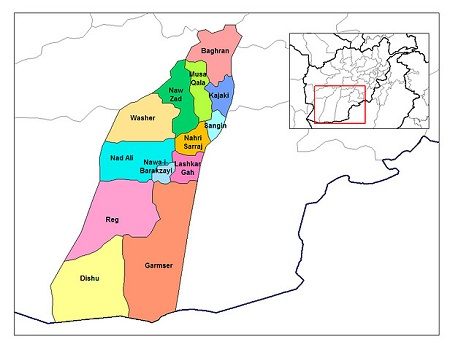By Lalit K Jha
WASHINGTON - The Khanashin carbonatites in southern Helmand Province have an estimated one million metric tonnes of rare earth material, according to a US Geological Survey (USGS) estimate.
This estimate came on Wednesday from a 2009-2011 USGS study, funded by the Department of Defence Task Force for Business and Stability Operations (TFBSO). "This is just one more piece of evidence that Afghanistan's mineral sector has a bright future," said TFBSO Acting Director Regina Dubey.
"The international mining community is beginning to realise Afghanistan's extraordinary mineral potential. The USGS's groundbreaking work provides a foundation for the kind of future investment that could help create a vibrant Afghan economy," Dubey said.
USGS Director Marcia McNutt hoped a neutral and unbiased analysis of the location, supply and flow of these strategic minerals would help the Afghans understand the true extent of their mineral wealth, said The primary area of mineralisation covers an approximately 0.74 square kilometers of area.
"The potential that these findings have for the future well-being of the Afghan people is significant," said Marc Grossman, Special US representative for Afghanistan and Pakistan.
Washington would continue support the Afghan government's efforts to develop the resources through private-sector investment in a responsible, transparent and sustainable manner that benefitted the Afghan people, expanded markets and promoted regional prosperity, he said.
The rare-earth element (REE) is a group of 15 metallic elements, with similar atomic properties and structures which are essential components in a diverse and expanding array of high-technology and clean-energy products. Despite their name, they are relatively common within the earth's crust, but are not often found in economically exploitable concentrations.
Rare earth elements are important ingredients in high-strength magnets, metal alloys for batteries and light-weight structures and phosphors. These are essential components for many current and emerging alternative energy technologies, such as electric vehicles, photo-voltaic cells, energy-efficient lighting and wind power.
Products containing rare-earth elements also are used in a number of key defence applications More than 95 percent of global REE production now comes from China, which in 2010 exported approximately 30,000 metric tonnes of such products.




